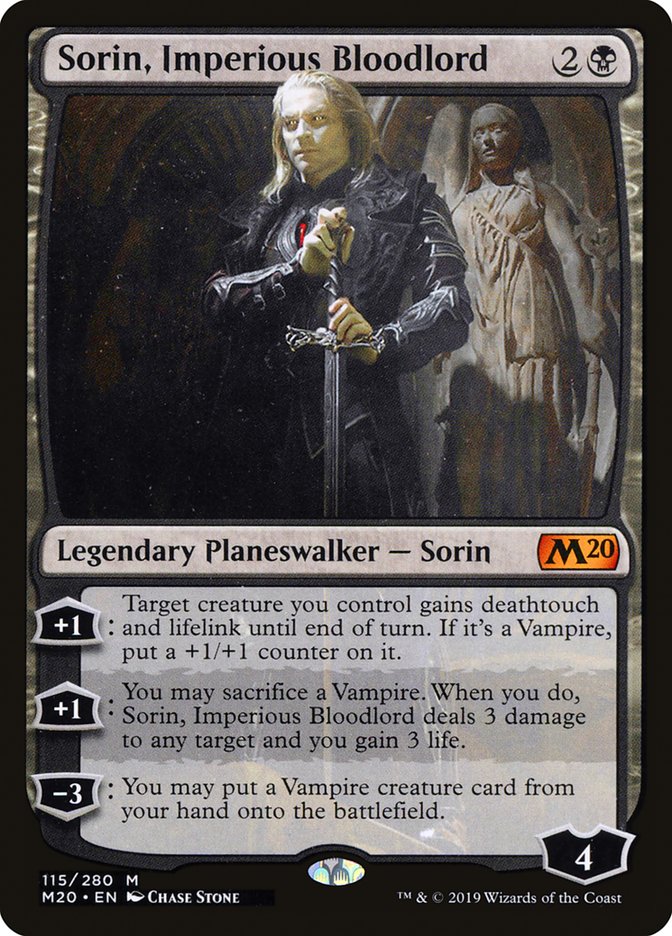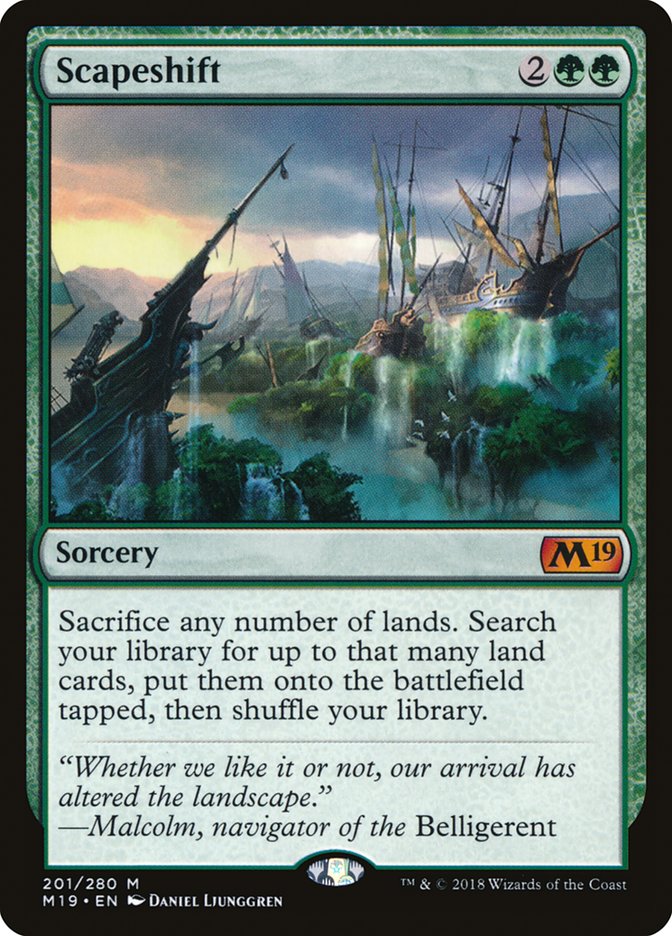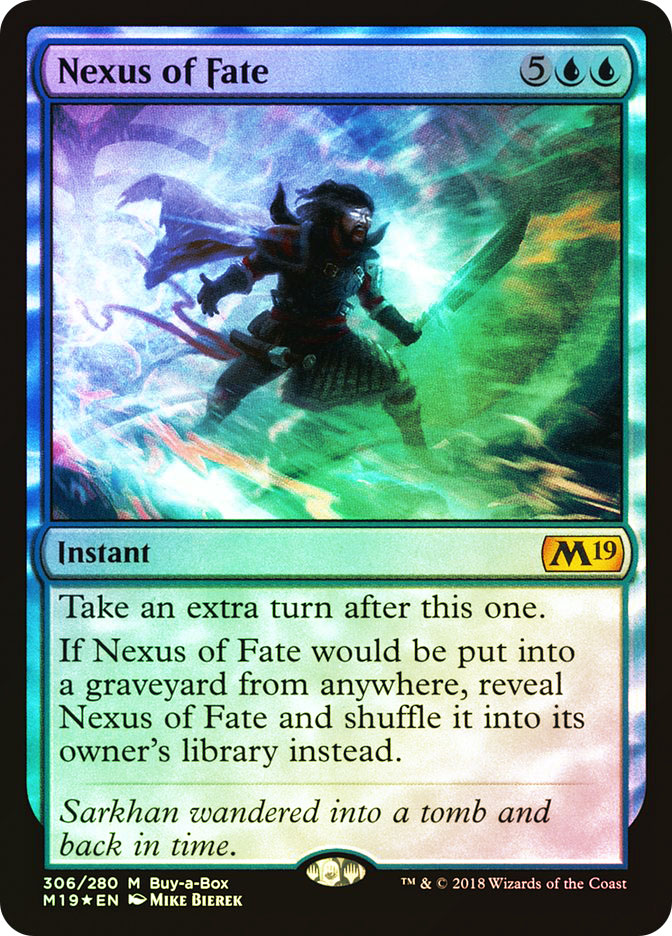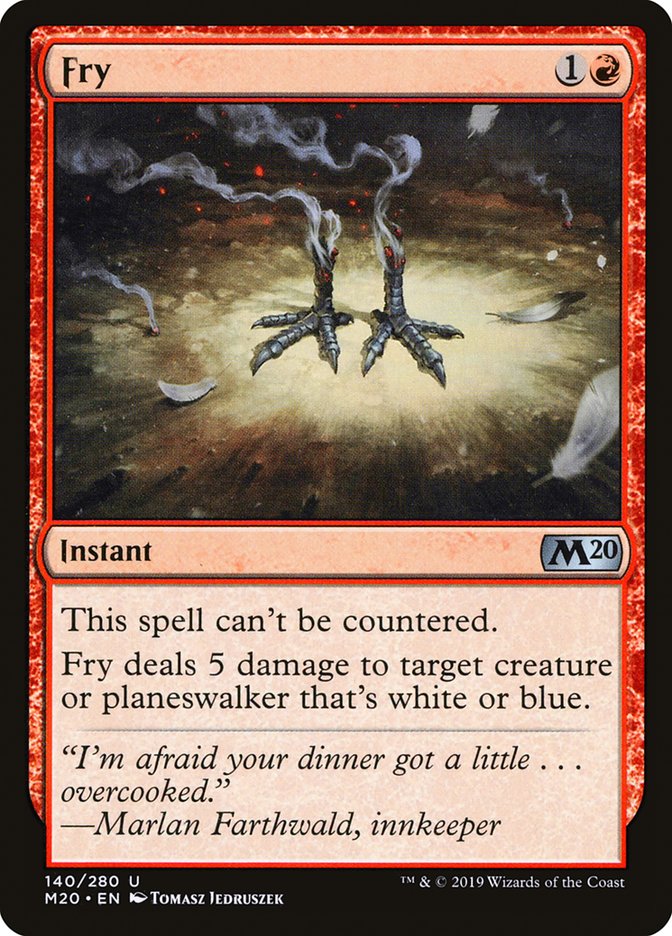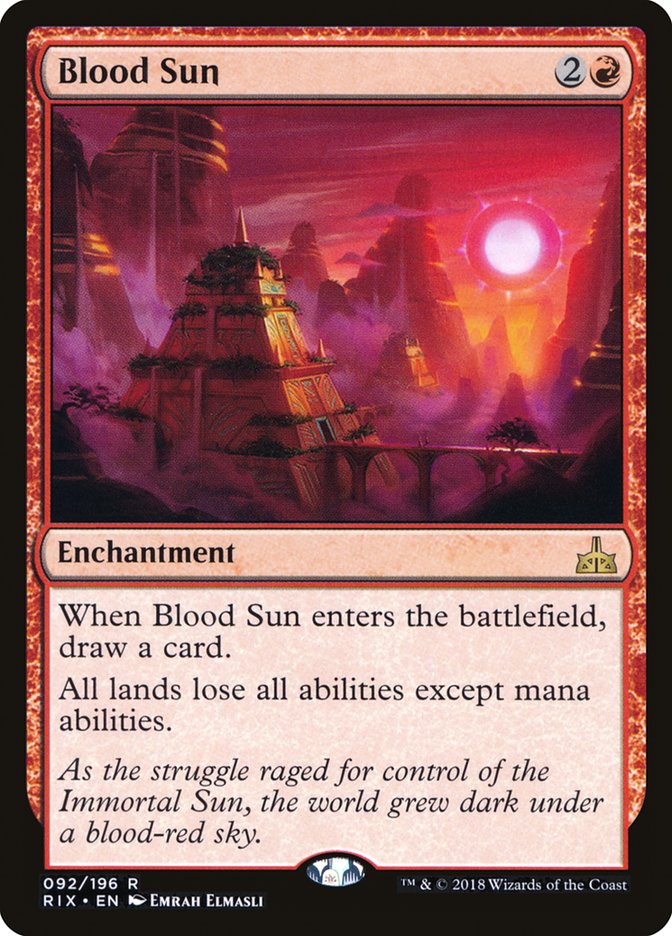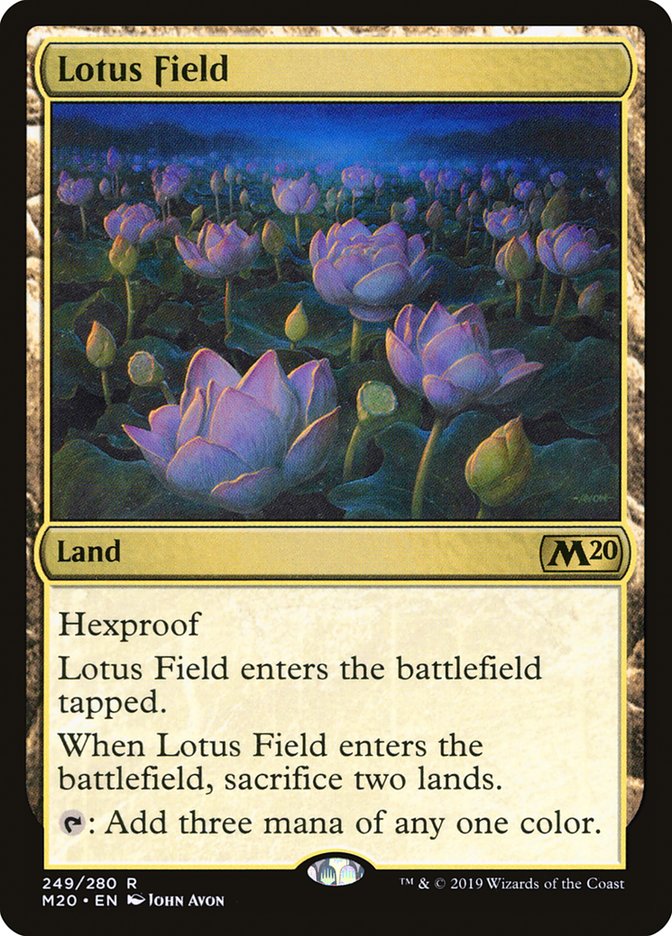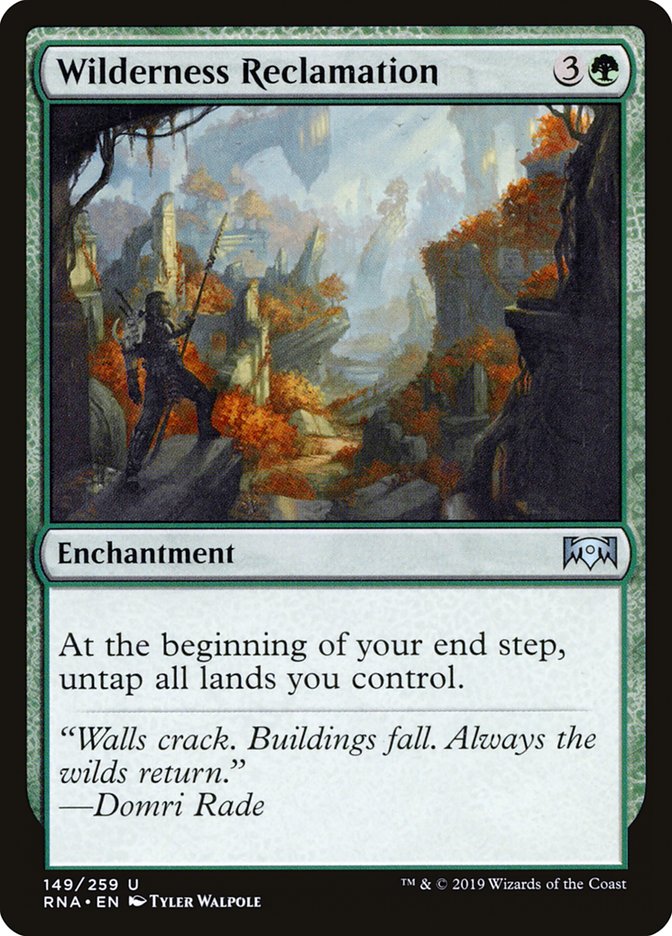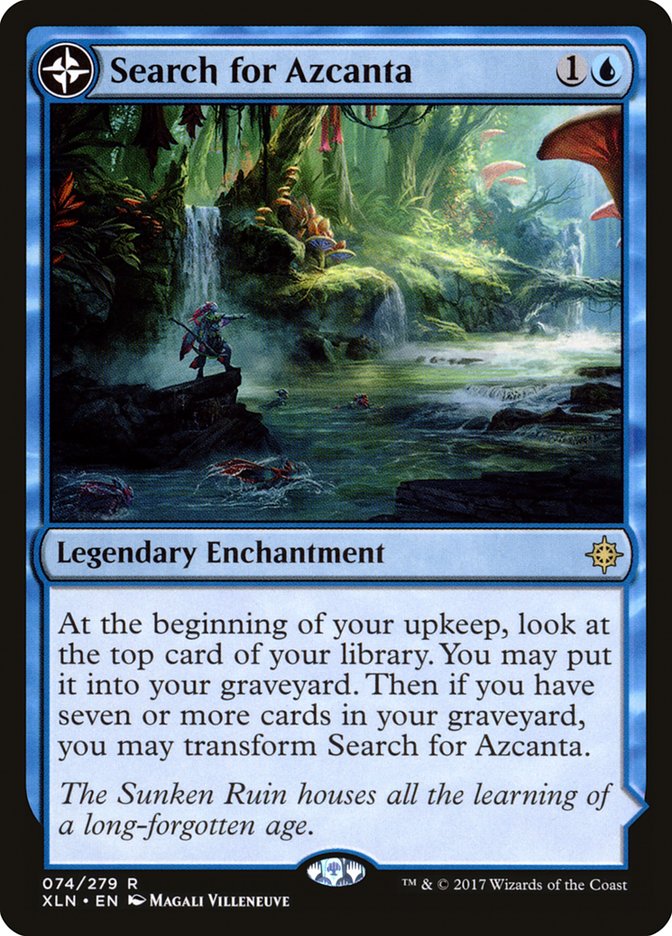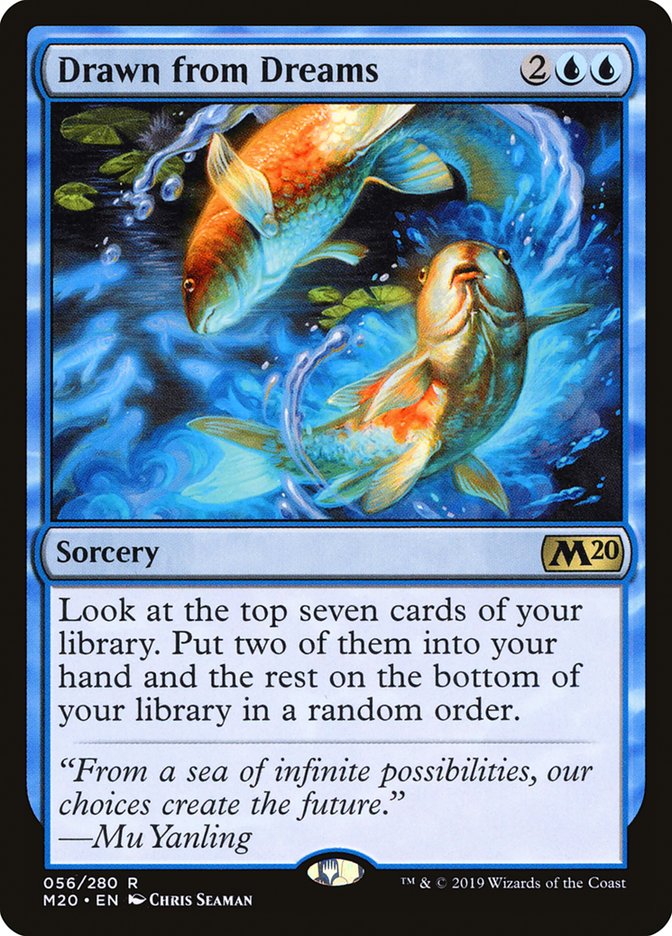As the summer months, as well as Core Set 2020 Standard, begin to sunset, the format sits as almost entirely solved. While there are myriad reasonable options to choose from, two decks sit above the rest in terms of win-rate, power, and consistency:
Orzhov Vampires and Bant Scapeshift sit at the king of the hill, and while other strategies have been doing their best to topple these two titans, none really seem to be able to for an extended period of time.
At this point, SCG Richmond will have wrapped itself up. I will have more than likely registered Orzhov Vampires, to hopefully a solid finish. In a way, I like Standard formats like this. There are objectively more powerful options to play from the rest, so it’s a lot easier to divide my free time into sharpening my skills with the best decks and playing with other slightly less optimal options for fun.
In that regard, I usually like to play with my favorite blue instant still legal in Core Set 2020 Standard.
I actually hadn’t touched a Nexus of Fate in quite some time, in part due to having to prepare for Modern tournaments followed by serious testing for Richmond. Last week, however, I happened to be scrolling through Twitter and stumbled upon this tweet:
This is where I landed. Deck feels solid, going to do a write up for my subscribers in the next two days! pic.twitter.com/wl5dMQCPMy
— Ondřej Stráský (@OndrejStrasky) August 6, 2019
Just like that, I was back on my nonsense.
The first thing I did was analyze the decklist to see what the key differences were and make sense of things before I dove into any matches. For quick reference, here’s the most recent Simic Nexus list I was able to dig up:
Planeswalkers (8)
Lands (15)
Spells (37)
- 5 Forest
- 4 Island
- 4 Opt
- 3 Search for Azcanta
- 2 Blink of an Eye
- 4 Nexus of Fate
- 4 Root Snare
- 2 Chemister's Insight
- 4 Growth Spiral
- 4 Wilderness Reclamation
- 1 Callous Dismissal
Sideboard

I did my best to compartmentalize each change, starting with the biggest one. The addition of a third color, red in this case, is significant, as Simic Nexus’s manabase historically has benefitted in a variety of different ways for being two colors. Besides obviously being more consistent, it plays utility lands like Blast Zone, between two and three copies, something you can’t really afford to do in a Temur manabase. This is significant because Blast Zone was instrumental in many matchups in dealing with problematic permanents your opponents would present, such as Teferi, Time Raveler. So, what does red really bring to the table?
The red cards featured in Stráský’s list are potent. Fry and Shock in the sideboard give the deck efficient removal spells for historically challenging planeswalkers and creatures to deal with. Again, the most notable one is Teferi, Time Raveler. The red cards likely also help a solid bit in the Orzhov Vampires matchup. Orzhov Vampires is one of the biggest reasons Simic Nexus hasn’t quite made it in Core Set 2020 Standard. A pile of red removal likely gets you some percentage points back.
Adding red also lets you play a more potent win condition with a little bit more utility. Expansion // Explosion, a card that I know I personally haven’t seen much of in a hot minute, replaces Callous Dismissal as a win condition / removal spell split card that can be retrieved with Tamiyo, and works very well with Wilderness Reclamation to outright kill your opponent in one shot, sometimes without even needing to take a single extra turn.
I saved the biggest reason this deck is playing red for last, since it’s the most important one and what holds this entire deck together:
Blood Sun’s stock in Core Set 2020 Standard went from approximately zero to some number much higher than that with the advent of Field of the Dead decks dominating the format for the last couple of months. Shutting off Bant Scapeshift’s primary win condition does a good amount of work on its own. Boros Feather decks have been employing the use of this card in their sideboards to help slow opposing Bant Scapeshift decks down while they assemble a battlefield presence. At the very least, it replaces itself, helping smooth out your draws some as well. In this shell, however, the card has an additional use:
The cute little combo of Lotus Field and Blood Sun was pointed out pretty early on when Lotus Field was previewed, but no shell really had found a home for it yet until now. After playing some games with this deck, this shell definitely makes very good use of this interaction, allowing you to start casting Nexus of Fates as early as Turn 4, with no Growth Spiral required. Most of the early turns involve playing as many copies of Temple of Epiphany and/or Temple of Mystery as you can, playing Blood Sun on Turn 3, and then playing Lotus Field of Turn 4, casting a Wilderness Reclamation, and going off from there.
The consequences of playing a card like Blood Sun in this deck are numerous. While I’m on the topic of the interaction with Lotus Field, it’s important to point out how this changes how this Nexus of Fate deck functions.
Simic Nexus is highly reliant on Wilderness Reclamation to give the deck the mana boost it needed to start casting Nexus of Fates and leveraging a card advantage engine ahead of schedule. This made it quite simple to interact with if you wanted to; enchantment removal or Teferi, Time Raveler shut the card down almost entirely. As it stands, the top two decks in the format have access to one or both of these ways to slow down Wilderness Reclamation. Blood Sun adds an entirely different element in that it provides a second way for the deck to create a mana advantage.
It puts your opponent in a bind as well: do they destroy or bounce the otherwise useless Blood Sun and leave themselves without an answer to Wilderness Reclamation, or do they just cross their fingers and hope you can’t make good use of your Lotus Field? Blood Sun creates a significantly easier path to starting to take extra turns through Teferi, Time Raveler, and when you have Lotus Field going, you end up having more than enough mana to do everything you need to do at sorcery speed.
I found the interaction with the Temples strange at first, but over time, I started to understand prioritizing playing Temples early in the game prior to resolving Blood Sun to maximize their value before simply using them as untapped multicolor lands later on. Blood Sun having the Temples enter the battlefield untapped at the cost of losing the scry ability ends up being a net positive a lot of the time, as the value of the scry usually comes early on in the game anyway. The only time I would say that the loss of the scry ability comes as a negative is when you don’t really need the untapped source, which comes up, but ultimately, I would not consider this interaction to be a negative one.
What I consider to be a big fundamental change for the deck is the fact that Blood Sun turns off Search for Azcanta, removing an important card engine from the deck’s toolbox. In its stead is Drawn from Dreams.
I was dubious on whether this card would be enough of a replacement for Search for Azcanta in this list but was pleasantly surprised. A lot of games where you begin to loop Nexus of Fates end rather abruptly if you find the Expansion // Explosion, meaning you don’t need to be endlessly churning through your library to take loads of extra turns while attacking with a 1/1 Zombie Army token over and over. Between Drawn from Dreams and Tamiyo, I was fairly satisfied with the deck’s ability to still consistently combo off without it.
Moving Forward
If I were to register this deck tomorrow, I wouldn’t change much from Ondřej’s list. I’d make some minor tweaks to the sideboard, but the maindeck is both well-built and difficult to change without removing key pieces. With that in mind, this is where I’d start my testing with this deck moving forward:
Planeswalkers (6)
Lands (25)
Spells (29)
- 1 Island
- 4 Opt
- 4 Blood Sun
- 4 Nexus of Fate
- 4 Root Snare
- 2 Expansion
- 4 Growth Spiral
- 4 Wilderness Reclamation
- 2 Drawn from Dreams
Sideboard

Maindeck Changes
Adding the second Expansion // Explosion seemed pretty easy to do, as I frequently found myself wanting to draw the miser’s copy often due to either Blood Sun or Wilderness Reclamation (sometimes both) giving me boatloads of mana and not a whole lot to do with it.
I was a huge fan of swapping Narset in for Chemister’s Insight as well, for two reasons, the first being various Esper decks still lurking around playing Narset themselves. Additionally, the one-two punch of Tamiyo or Wilderness Reclamation and Narset on Turn 4 from curving Blood Sun into Lotus Field was also nearly impossible to handle for most of the decks I played against. I frequently found myself desperately wanting to do something with the three extra mana on Turn 4, and Narset fit the bill perfectly.
Sideboard Changes
The sideboard changes from the original list boil down to wanting more pointed hate towards Orzhov Vampires and Esper. Selective Snare has been a fantastic card to ramp into with Lotus Field before setting back Orzhov Vampires players so much that they frequently cannot reassemble adequate pressure in time before you’re able to overpower them. The sideboard plan of Hydroid Krasis and a pile of answers to Teferi has proven to be more than good enough, and it is usually very difficult to get ground out. The biggest concern in the Esper matchup a lot of the time is getting beaten down too quickly by Hero of Precinct One and a pile of Human tokens, but Fry solves that problem pretty well on its own.
As I alluded to at the beginning of the article, Core Set 2020 Standard is virtually solved at this point, with really only one or two decks outside of Orzhov Vampires and Bant Scapeshift able to keep up. Temur Nexus likely won’t get enough love before rotation as a result, but I think that this shell is something that, given more time, could be tuned to tackle the top of the metagame.
I’d like to personally take this opportunity to thank Ondrej for giving me a good excuse to cast a few more instant-speed Time Walks before the card leaves us for good in the fall. If anything, this deck is significantly more fun to play than most of the stuff I’ve touched in this format recently, so this’ll definitely be my go to project when I get tired of putting Champion of Dusk onto the battlefield on Turn 3 with Sorin, Imperious Bloodlord.


